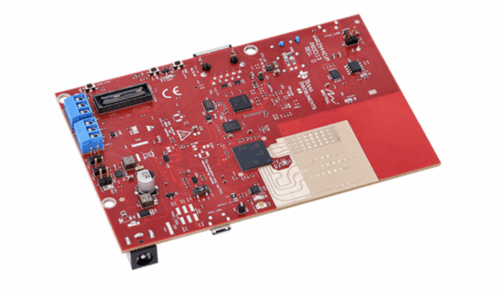The reference design uses monitoring and diagnostics to simplify radar system safety, reduce processing load, cut development time, and support radar sensing ranges.

The TIDEP-01030 reference design from Texas Instruments includes several key features that simplify the development of radar-based safety systems. It uses built-in autonomous monitoring within the mmWave radar sensors to manage system health without adding load to the main processor. The Safety Diagnostic Library (SDL) allows thorough testing of digital cores, peripherals, and memory blocks. The design is built on TI’s AWR2944 device, which integrates a 76–81GHz mmWave radar front end, an Arm® microcontroller, and TI DSP cores into a single chip. Both analog and digital subsystems are monitored using dedicated hardware and firmware, accessible through RadarSS firmware APIs and mmWaveLink Monitoring APIs. The analog subsystem includes 3–4 transmitters, 4 receiver chains, clock oscillators, and FMCW signal generation circuits like Cleanup APLL, synthesizers, and frequency multipliers. The system handles automatic calibration and regular monitoring to keep RF performance stable. In the digital domain, safety diagnostic functions cover memory and logic blocks across the TOP, Master, and DSP subsystems. The design package comes complete with hardware lists, schematics, and reference software, supporting a wide range of radar applications including long-range, mid-range, short-range, and ultra-short-range radar systems.
These features provide several advantages for system designers. Offloading the monitoring workload from the main processor frees up system resources and simplifies software development. The integrated diagnostics streamline safety compliance for standards like ASIL-B SIL2, reducing the complexity involved in meeting functional safety requirements. The single-chip SoC design minimizes component count, reducing board space and overall system complexity. Flexible monitoring configurations allow designers to tailor safety mechanisms based on application needs. Automatic calibration and continuous health monitoring ensure that the RF front end remains within performance limits over time. The system detects both systematic and random faults, improving reliability. The complete design package accelerates development, while the flexible hardware platform allows the same design to be used across multiple radar sensing applications.
As a result, the TIDEP-01030 reference design helps reduce development time and speeds up time-to-market for safety-critical radar systems. It lowers the total cost of the system by simplifying design and reducing the number of components. The built-in diagnostics and monitoring functions enhance system reliability and safety even in harsh environmental conditions such as rain, fog, or dust. Finally, its scalable architecture allows manufacturers to address different radar range requirements using a single hardware platform, reducing the need for multiple design efforts.
TI has tested this reference design. It comes with a bill of materials (BOM), schematics, assembly drawing, printed circuit board (PCB) layout, and more. The company’s website has additional data about the reference design. To read more about this reference design, click here.








